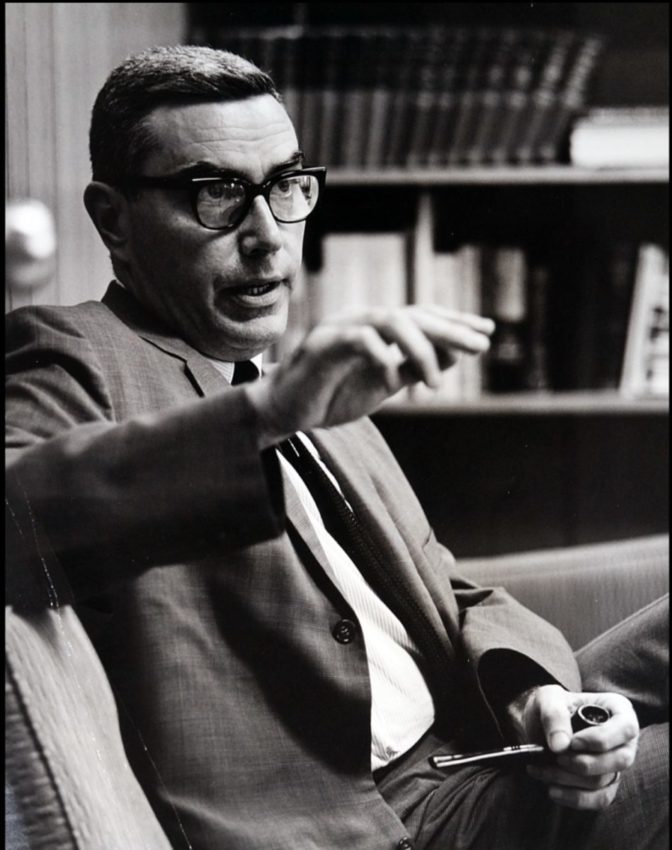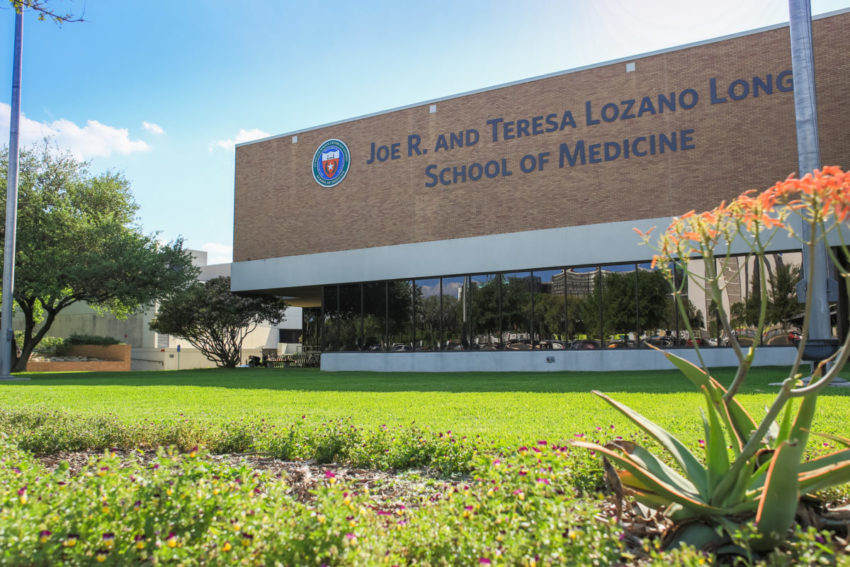The University of Texas Medical School at San Antonio, now known as the Joe R. & Teresa Lozano Long School of Medicine at UT Health San Antonio, opened for classes 50 years ago in September 1968. As part of an ongoing, yearlong celebration, we interviewed three active faculty, two founding faculty, a distinguished alumnus and a medical student about what the school’s milestone means to them.
Fred Campbell, M.D., general and hospital medicine
Q: Dr. Campbell, what does 50 years of the Long School of Medicine mean to you?
A: For me it means an incredible change in the character of the practice of medicine and of the people who practice it. I’ve been fortunate enough to be part of the admissions committee for the last 20 years, and I’ve seen a lot of change in terms of faces and gender in our medical school classes. I am proudest of the fact that these young people are incredibly dedicated to helping people who are the least fortunate in our society.
Robert Esterl, M.D., associate dean for undergraduate medical education
Q: Dr. Esterl, you’ve been here for 25 years. Are you pleased with the changes you’ve seen in the Long School of Medicine, for example, the CIRCLE curriculum? (CIRCLE develops habits of self-directed learning and integrates basic and clinical science knowledge with early clinical experiences to provide medical students with a better understanding of disease processes and management.)
A: Absolutely. Students are doing extremely well with the introduction of the CIRCLE curriculum, both in progressing through the medical education program and in applying for residency programs. In March 2017, almost 99.5 percent of our students matched in their residency of choice, and this past March, 99 percent of the class matched in their residency of choice. In March 2018 [by comparison], 84 percent of students nationwide matched to the top four programs on their rank list. Our students are highly sought.
James L. Holly, M.D., 1973 alumnus, 2012 Distinguished Alumnus, Beaumont, Texas
Q: Dr. Holly, are you pleased with the school’s direction?
A: It’s beyond words. This was a cow pasture when I started school here. The dental school didn’t exist; none of the other schools existed. The Audie Murphy VA hospital was built while I was in school here.

Q: Are the students as high quality as when you were here?
A: Today’s students are brilliant. Each one seems to be a virtual genius. Their academic achievement already is incredible.
I wish Dr. [F. Carter] Pannill were here. He was so proud of this school. He laid the foundation as the dean [1965-1972]. Dr. William Henrich, as the dean and now the president, has built on that.
When you look at the research dollars, at the great stuff everyone is doing, it’s breathtaking. It inspires me to hear it.
Q: Dr. Holly, tell us about your role models in those days.
A: I have unique stories about Dr. Marvin Forland, Dr. Elliot Weser, Dr. David Fuller and Dr. Jim Story. They were our mentors. We could talk to them, they had an interest in us, and they helped build us into what we are today. I can’t express enough how grateful I am.
Norman Wulfsohn, M.D., founding faculty, anesthesiology
Q: You were here the day the school opened. Are you proud of where things are today?
A: Yes, it’s going the right direction; it’s a very good school and has expanded tremendously. Medicine keeps changing all the time, getting better. The treatments that we never had before now [are reality].
I can tell you all kinds of stories. When I came here, the medical school wasn’t yet completed. We couldn’t move in, so we had to work at Robert B. Green [downtown] for a couple of months. And then the medical school opened. And the first day, they tried to bring a patient in for orthopaedic surgery and they couldn’t get through the main doors to the operating room. So they had to cancel the operation and rebuild the doors because the engineers never knew that the orthopaedic guys have all of these stirrups and pulleys and things. The bed was wide and couldn’t go in.
Jim Story, M.D., founding faculty, neurosurgery
Q: The Joe R. and Teresa Lozano Long School of Medicine. That’s a great name for a great school of medicine, isn’t it, Dr. Story?
A: It’s nice to see the interest that the Longs had in funding this marvelous institution. I have no doubt that it’s going to contribute materially to the further development of the school. It’s very encouraging.
Q: Your daughter, ophthalmologist Kristin Story Held, M.D., is a Long School of Medicine graduate. Are you proud of her career?
A: KK is fantastic, and she also has two daughters who have finished our school. One of them is staying on the faculty, Dr. Holly Volz in dermatology, and KK’s younger daughter, Dr. Heidi Volz, is just beginning her first year of postgraduate training in dermatology, having just finished the school.
Luke Verlinsky, first-year medical student
Q: Luke, what does it mean to you as a new student to be a member of the 50th class? Does it give you confidence in the school?
A: Yes, it gives me a lot of confidence because I know that the school has a strong legacy of producing well-rounded physicians. I’m really excited to be a part of that.
I’m interested in orthopaedic surgery. At my interview, they said that we [Long School of Medicine graduates] match highly into orthopaedics. I’ve already met several medical students in my Veritas group who are interested in orthopaedics, and they seem really ready for it. It sounds awesome. [Veritas is the Long School of Medicine’s student advising system.]
Judianne Kellaway, M.D., M.Ed., FACS, associate dean for admissions
Q: Dr. Kellaway, the Long School of Medicine has a tradition of excellence in educating Hispanics. What makes the school attractive to the Hispanic student?
A: I think that our city, with its Hispanic heritage, will draw students who are either from a Hispanic culture or who are interested in helping the Hispanic population and serving the people of this city. I think that brings a lot of committed students to us.
Q: How does our holistic admissions process strengthen the Long School of Medicine?
A: We look for a balance. We look for strong students, strong academics, but we absolutely also prioritize heart and soul and reaching out to have experiences that enrich the young person. Those are the things that we focus on in our holistic admissions.


